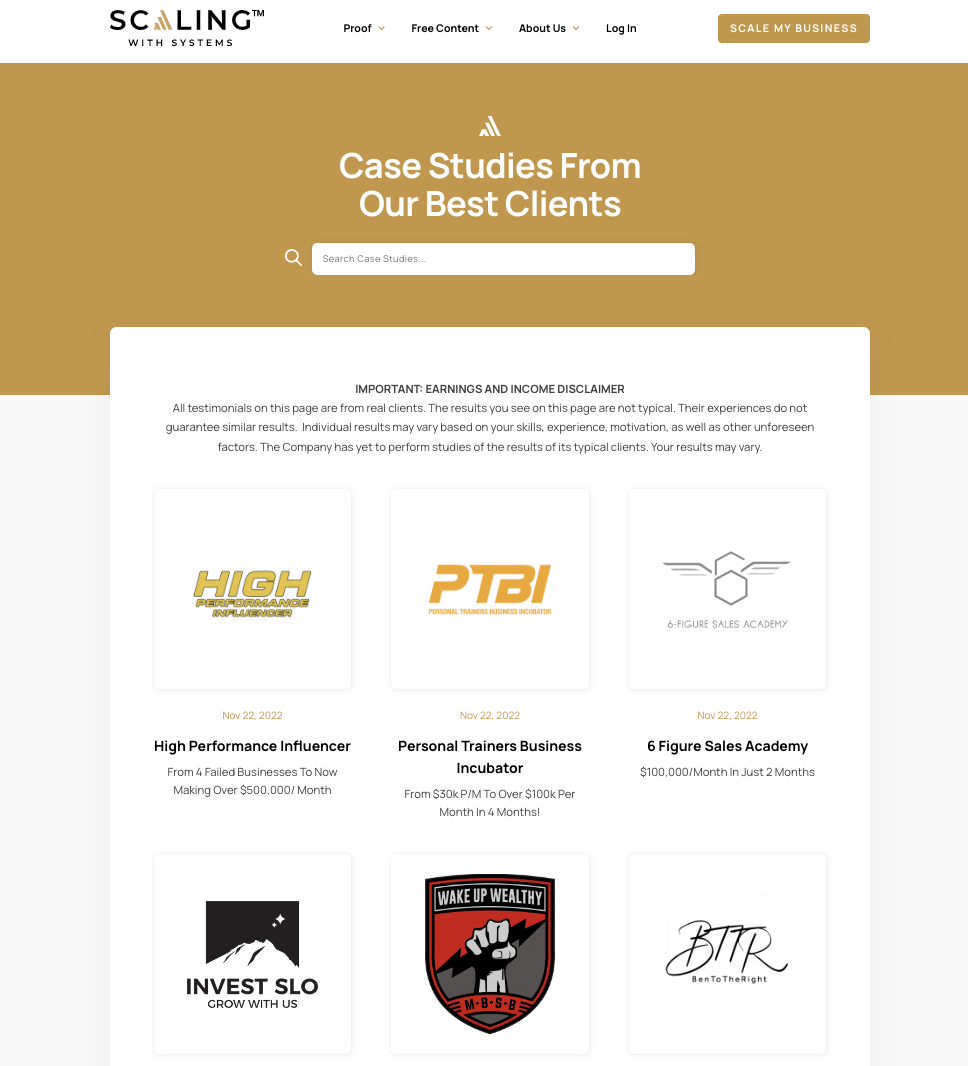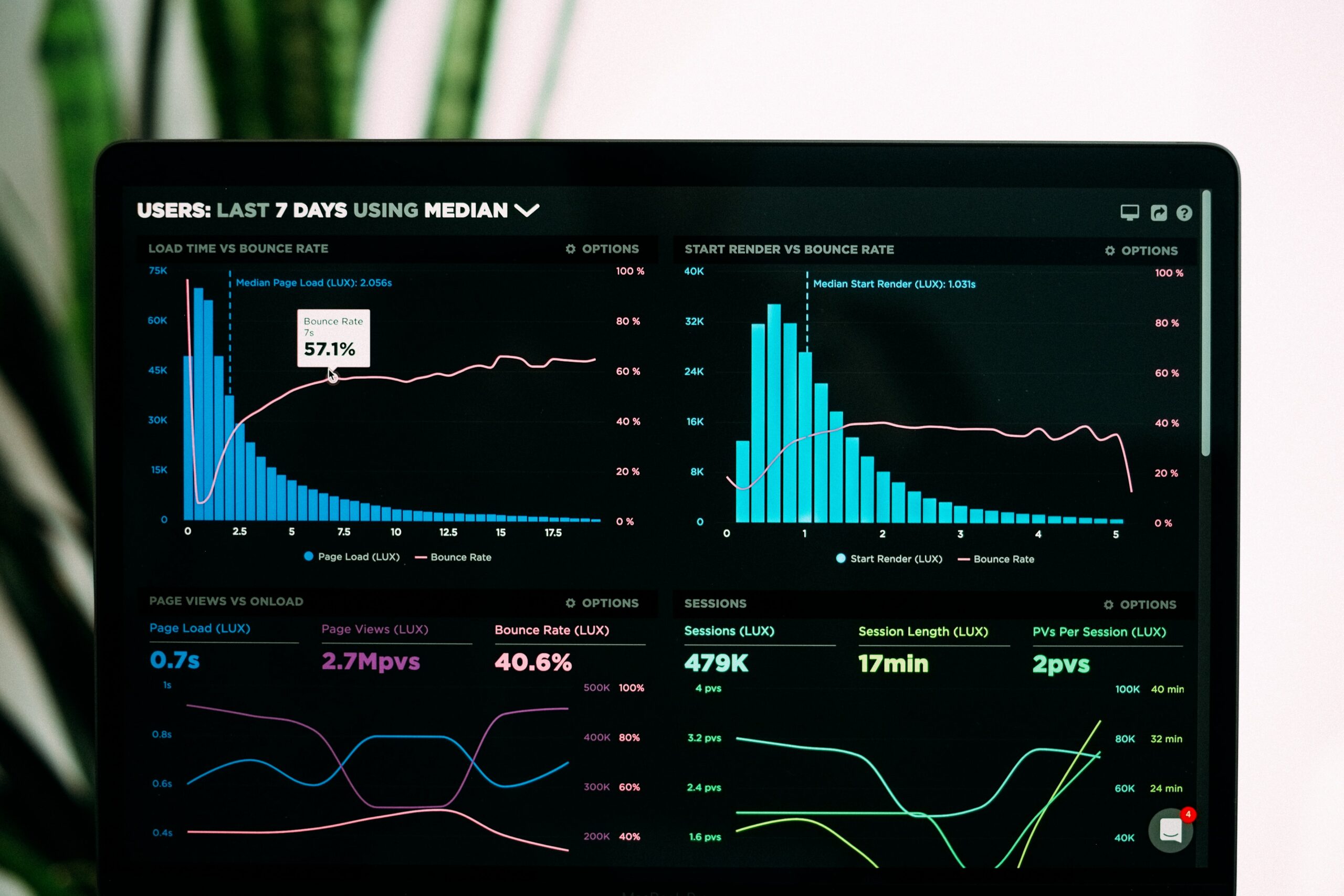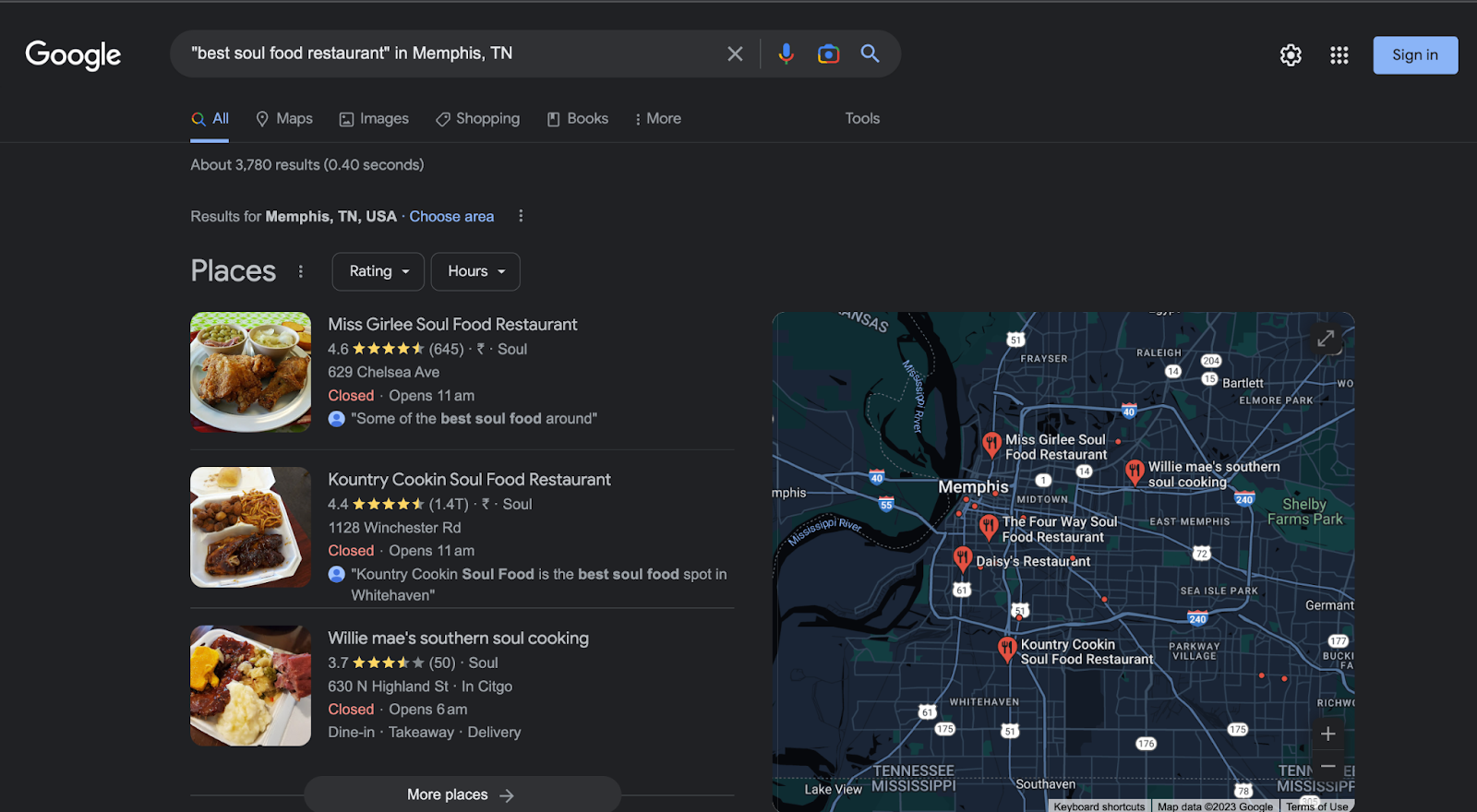So, you want see what your website visitors are up to? Of course, you do. It’ll give you some very valuable information to help drive better results with website conversions.
When you track visitors, you get an idea of their behavioral patterns when they’re on your site. This information helps you optimize the user experience for your customers. Visitors tracking helps you understand what they’re looking for, how they’re navigating through the site, and what roadblocks they’re hitting.
When you track visitors behavior, you’ll find out how they make decisions, and you can encourage site visitors to take the next actions in your sales funnel (book a call, sign up to the mailing list, or purchase).
When it comes to improving your website’s performance or better understanding your audience, tracking user behavior on your website can be a game-changer. Here’s how to do it…
Website Visitors: An Overview
Business owners and marketers should analyze visitors behavior often to maximize the performance of their website. The data gathered from visitors tracking helps you make better decisions about the layout and functionality of your website.
What Do You Visitors Want?
Create an integrated B2B marketing strategy based on what your website visitors want. You can make your sales strategy better by knowing what motivates and interests your visitors.
To know the purpose of your website visitors, you can use various techniques, including the following:
- Analyze website traffic data: Tools such as Google Analytics can help you see where traffic is coming from, what pages are the most popular, and what the average time is that people spend on different pages of your site.
- Conduct surveys: Ask your visitors directly what brought them to your website and what they hope to achieve. You can conduct surveys online or over the phone.
- Track search terms: See what keywords visitors use to find your website and what questions they ask in search engines.
- Observe visitor behavior: Use tools like heat mapping to track where visitors are clicking, what they are ignoring, and what they are having trouble with.
Impressions & Clicks
Impressions and clicks are key to understanding website visitors behavior. Impressions are the number of times a page or advertisement has been displayed to a visitor. Clicks refer to the number of times a visitor has clicked on a specific link or ad.
Website owners can track these metrics to see what content draws visitors and what ads resonate with them the most. This information can also be used to improve engagement and conversions on the website.
Google Analytics can track multiple metrics, such as average time on site, pages per session, and bounce rate. We can use the data to see how visitors interact with the site, what pages they visit, and how long they stay.
Common Web Content Mistakes
These common web content mistakes can hurt your engagement and conversion rates:
- Poor Navigation: Complicated navigation makes it difficult for website visitors to find the information they need. This can result in a higher bounce rate (leaving the website quickly after entering).
- Slow Loading Speeds: Longer loading times can also encourage users to leave the site entirely. In fact, if people wait up to 10 seconds for the page to load, the bounce rate probability increases by a whopping 123%. Your website visitors will leave the site if the pages take forever to load. People are used to instant access to information.
- Inadequate Content: When you don’t have any relevant content to engage your website visitors, they may lose interest and leave the site. You need to have enough information for people to understand what your company does, why the services/products are valuable, how to purchase, and other interesting and informative content.
- Ignoring User Feedback: If you ignore user feedback, you’ll end up with a website that doesn’t meet the needs of your visitors. Without tracking your website visitors and understanding where they are having trouble on your site, you won’t know why they are leaving and what you can do to remedy it.
- Unclear Calls-to-Action: Without having a clear and visible calls-to-action, visitors will be clueless about what to do next.
Importance Of Google SERPs
Google SERPs (Search Engine Result Pages) show how your website will appear to potential visitors in search engine results. Having a high rank on the SERP means you’ll get more traffic and clicks.
Some of the key benefits of appearing high on Google SERPs include:
- Visitors Spying: Google SERPs affect a website’s online presence and visitors’ behavior. Website owners can have more data to use when they are tracking their web visitors if they’re ranked high on SERPs. With a larger dataset, more insight can be gained.
- Increased Brand Awareness: When more people see your website in Google’s SERPs, your brand awareness will grow. This leads to more customer loyalty and recognition.
- Cost-Effective Advertising: When compared to paid search advertising, ranking high on Google’s SERPs is a cost-effective way of reaching your target audience. It’s a long-term strategy that pays off over time without spending a lot.
- Competitive Advantage: Higher ranking gives you an edge over your competitors. This competitive advantage increases market share and profits.
How To Optimize Website Visitors’ Experience
Getting traffic to your site is important, but understanding who your visitors are and how they behave can help you reach your goals faster.
When you track visitor data, you can use it to create strategies that’ll improve your user experience and user interface. Three things you can learn from your website visitors:
Use Case Studies
If you’re familiar with Scaling With Systems, you know that we love providing case studies of our clients. Displaying them on your side can be a game changer in growing a business.
Case studies are a great way to show people you can deliver on your promises, educate prospects, and prove your credibility. They should be at the core of your business and prominently displayed on your website.
It’s a marketing asset for your company. People trust your brand when they see real results. This is why we have a specific section on your website showing our past client results and case studies.

But, readers often doubt the legitimacy of case studies. How do you overcome this?
If you’re going to do a case study, make sure there’s enough evidence to prove the client’s transformation from baseline. You can ask the client for more information to make the case study stronger.
Call-To-Action
When someone has checked out your case study and is convinced, the next step is to have a clear call-to-action. A CTA is a way to get someone to take the next step with you once they are ready to do so. It should be easy to find and prominently displayed on your site.
On our website, the CTA is to “Let us build a profitable client acquisition system, with the button, “Scale My Business” standing out in black.
The CTA should be written in large, attention-grabbing text, and whatever the action is (button/form) should also be easy to see.

It may take the users to a free training video or a sales page. They should be able to easily take the next step once they have decided to explore working with you.
Fun Fact: Human behavior is naturally prone to laziness.
When you’re creating your website or marketing materials, keep this in mind. On our page, CTAs are located throughout the page.
When clicked, they direct to an application form where the user can answer questions about themselves, their business, and their business goals. This will take them to book a time to speak with us.
Website Blog
A blog is an important part of a website. It doesn’t have to be exceptional; it just needs to be worth reading. Content does a lot for businesses’ websites. It provides greater authority for the readers to realize how knowledgeable a company is about the industry. That helps to build more trust.
After all, people want to buy from businesses that are exceptional at what they do. Posting regular content that is SEO optimized is also a great way to enhance visibility and attract more visitors. By showing up higher in search results (SERPs), you’ll receive more clicks on your site. Beyond that, it also builds more credibility for the business.
By appearing higher on SERPs, your blog is more likely for others to link to it in their own content. That cross-linking does wonders for driving more organic traffic to your site. Each blog post is also another chance to add in CTAs (always finish with a CTA at the end, and even mid-content).
3 Things To Learn From Visitors Tracking
Without tracking your visitors, you’re going to struggle in the long run. You can improve your website’s design, content strategy, and traffic by analyzing visitors’ behavior.
Remember that what works for other businesses or popular marketing sites may not apply to your business. We cannot depend only on external data and campaigns. We need statistics to make the right decisions regarding our strategies.
Your content marketing team needs to track your company’s performance through the back end. Here’s what to focus on:
1. Identify The Most Popular Posts And Pages
Know which posts and pages on your website are the most popular. This can help you figure out what kind of content resonates with your audience.
If a specific type of landing page or blog post has been gaining traction in the past and is still performing well, it’s likely to remain successful in the future.
2. Find Out The Origin Of Website Visitors
When you’re targeting a particular geographical location for your customers, knowing the source of your website traffic can be helpful.
To drive targeted traffic from a specific location, these methods have proven to be effective:
- Optimize your website for search engines (SEO)
- Run campaigns on local social media groups and use local online ads
- Promote your business through in-store advertisements like email newsletters or text message marketing opt-in
- Create a presence on Google My Business
3. Leverage Behavior Analytics Tools
With a better idea of what data to seek, you would collect, monitor, and evaluate it. To optimize the process, try these tools:
- Google Analytics: A widely used website analysis tool that can be integrated with other marketing tools.
- Jetpack for WordPress: A free tool that gives insights into website traffic, including the most visited pages and the traffic source.
- HubSpot: An all-in-one platform for marketing and customer relationship management. It tracks visitor behavior and identity. Once registered, HubSpot pulls information, such as Twitter profiles and visitors’ websites, based on their email addresses.
- Shopify: An e-commerce-focused content management system that gives you user behavior data in the website dashboard.
Website Visitor Metrics
Websites need frequent care and maintenance. When you analyze website data, you can stop relying on guesswork and make informed decisions on how to rank and convert your site better.

To get the most value, it’s important to track the following six key website metrics:
1. Number Of Visits
Keep track of the number of visits to see what factors have impacted your traffic. For instance, you might see an increase in traffic after trade show attendance, email campaign, or publishing an article to your blog. But, you might see a drop when you’ve been less active in your marketing efforts.
2. Time On Page
The average time on a page refers to how long users spend on a specific page on average. This metric tells you how engaging your content is. The longer a visitor stays on a page, the more likely they are to read and absorb your content.
3. Bounce Rate
Bounce rate is the percentage of website visitors who visit one page of your website and leave your site without interacting. This metric can be misleading as it doesn’t always mean low engagement.
Even a high bounce rate on a landing page can still lead to high engagement if visitors find what they’re looking for and leave. Keep an eye on your bounce rate, but know that it’s not the only indication of a poor-performing site.
4. New & Returning Visitors
You’ll know that your SEO is working if you’re getting new visitors consistently. The number of returning visitors is also important to consider here.
A poor user experience can be annoying and prevent website visitors from returning to your site. Common UX issues include slow load times, too many ads, confusing visual layouts, or unclear CTAs. These can result in lost leads.
5. Scroll Depth
Scroll Depth shows how far down the page users scroll on average. Heat mapping tools like GoodEgg and HotJar can help you see the extent to which visitors scroll.
You can increase engagement and results by rearranging information on the page.
6. Traffic Sources
Traffic Sources tell you where your visitors come from. By using tools such as Google Analytics, you can get insights into the following sources of traffic:
- Direct
- Organic Search
- Referrals
- Paid Search
- Social and Display Ads.
Website Analytics Tools
To get more traffic and improve your digital presence, you need to know your website visitors.
You can transform your business when you learn how your visitors interact with your website.
Here are the best website analytics tools that we’d recommend for businesses:
Google Analytics
Google Analytics is a free tool that is easy to set up as per your business needs. It works well with several third-party apps.
This tool helps you track website visitors and gather intel, such as their age, location, and device type. It also lets you detect user entry points, page interactions, and exit points.
Google Search Console
Google Search Console is a free website analytics tool that helps you track your website’s search traffic and performance. It lets businesses see what’s affecting their appearance in Google search results.
You’ll also get an in-depth look at what searches drive visitors to your site. You need to know how your audience references specific topics or services to create better content.
CrazyEgg
CrazyEgg is a great tool for tracking what users interact with and what they’re interested in.
Its engagement tracking features include heat maps that show website visitors clicks. Plus, scroll maps show how much users scroll down a page.
Try A/B split testing. You can test different versions of your website by changing elements and seeing how users react.
Hotjar
User testing is great if you’re thinking about revamping your site. With Hotjar, you can watch real-time user behavior on your site, which can confirm or challenge your assumptions. It also offers heat mapping and other testing features similar to CrazyEgg.
Quantcast
Quantcast is one of the most powerful analytics tools out there. It gives you AI-driven audience insights, tracking, and measurement. You’ll get in-depth, real-time data about your website’s audience, motivations, and behavior.
5 Ways To Improve Website Traffic
You’re not alone if you’ve had difficulties attracting traffic to your website. 63% of content professionals struggle with finding skilled personnel for enhancing content strategy, affecting website traffic.
It can be hard to track what is driving traffic to your site when you’re writing blog posts, posting on social media, and planning email campaigns. The following tips can help you boost website traffic and enhance your ROI:
On-Page SEO
By improving your on-page SEO, you can boost your rankings and get more traffic. You need to optimize things like the page title, header, meta description, image alt-text, URL, and more. Attract more visitors to your site by appearing higher in search engines.
SEO Tools
To increase website traffic, you have to master SEO tools to be able to adjust your SEO strategy in your content creation. You can generate traffic to your site with tools like Google Analytics, Ahrefs, and SEMrush.
They’re great for evaluating and understanding your website’s performance, identifying areas for improvement, and generating content ideas.
Local SEO
Local SEO is an important aspect of running a physical business. Tools like Google My Business and Moz Local help businesses manage their directory listings. For example, these restaurants appear in the search results for “best soul food restaurant” in Memphis, TN.

To boost your local search ranking:
- Make sure your business info (Name, Address, Phone Number) is the same on all online platforms, especially Google My Business and social media.
- Use a directory management tool to manage your Yelp, Foursquare, and Best of the Web listings.
- Use location-based keywords on your website. Tools like Google Trends will help you find popular search terms in your area.
- Even if you have an entirely digital business, you can still put your headquarters address into Google Maps.
CTR Optimization
You can track how many people read your content through your click-through rate. CTR is calculated by dividing the number of clicks on your post by the total number of views. You can measure organic CTR with Google Search Console.
Write engaging meta descriptions and titles to drive traffic to your site. Keep them short and to the point, so that visitors are motivated to click and explore more content.
Analyze Visitors Behaviour: FAQs
How to analyze visitors behavior on the website?
Web analytics is a process that helps to analyze visitors behavior. This involves data tracking, reviewing, and reporting to measure web activity, including website and component use (webpages, images, videos).
How can I see where visitors click most on my website?
Use a click map, also known as a heat map, to see where users click or tap on your website. Click maps help track user engagement, including clicks on buttons, links, and images.
What is the process to analyze visitors behavior on a website?
Visitor behavior analysis requires various tools to track website performance, understand on-site behavior, identify experience issues, gather feedback and insights, and optimize the website.
Wrapping Up: Track Visitors For More Conversions
In today’s marketing world, data-driven decisions are important to reach your goals. You need to keep an eye on your website visitors and behavioral patterns. Track, review and report the current data to analyze visitors’ behavior and make more impactful decisions.
If you use the tools we discussed above, you’ll get more data on website performance, visitor behavior, and feedback.
When you regularly track visitor behavior, you’ll be able to make more rational decisions that are based on data and logic. This will improve the user journey for people coming to your website and increase conversion rates.
Want more help? At Scaling With Systems, we’ve helped thousands of business owners scale their businesses to the next level. We create client acquisition systems that bring your business new clients, on autopilot. Book a free consultation call and one of our advisors will get in touch with you.



